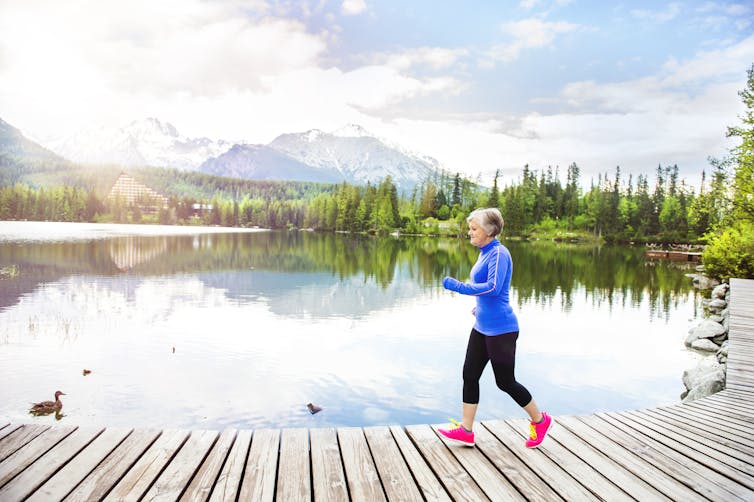We naturally lose muscle mass as we get older. This process starts around the age of 36, and by the time we are 80 we’ve lost about 50% of our muscle mass. Long periods of inactivity can also cause us to lose a greater amount of muscle mass than we might normally. This has been the case during the COVID-19 pandemic, as many of us were less able to exercise as much as we use to do.
While most young people will be able to bounce back and regain their muscle mass easily, it may not be as easy for older people. This is because it can be more difficult to gain muscle mass as we age due to the changes in muscle structure, and doing too much too quickly can result in serious injuries. This is why older people need to get the balance right when easing back into exercise again.
Maintaining muscle mass
Maintaining muscle is important for many reasons. As we age, frailty can make it more difficult for us to be independent and do the things we need to do each day – from going shopping to meeting our friends. Being active maintains a healthy musculoskeletal system whilst also protecting us from some diseases, such as type 2 diabetes. Research also shows that strong active muscles can help prevent falls and lower injury risk.
But while it may be tempting to hit the gym and start lifting weights now that many COVID-19 restrictions have eased in the UK, if it’s been a while since you last exercised regularly, it’s important to ease back into things. Weak and de-conditioned muscles take time to build strength and doing too much vigorous, repetitive exercise can overload muscles and joints that have not been trained, leading to injury.
Here are a few ways to get moving again without injuring yourself:
1. Progress slowly.
It’s best to gradually return to activity so you don’t overdo things or injure yourself. A staged approach, where you slowly introduce different exercises, will allow your muscles to recover between each session. Beginning with basic exercises around the house is a good starting point.
Then increasing the number and type of exercises you do can also help you from getting fatigued and losing form – which are prime conditions for an injury to occur. For example, starting with a short walk that then gets longer and progresses to a hill or rougher terrain allows for slow and persistent challenges for your body to become accustomed to while still helping you stay interested in exercising.
2. Reduce the time you spend sitting.
Long periods of sitting, if you have had to isolate or if you are working from home, significantly reduces muscle activity – and therefore muscle mass. So if you haven’t kept exercising during the pandemic, you can’t expect to pick up where you left off.
Take frequent breaks between meetings and introduce a walk at lunch. Stretching and moving around after long periods of sitting prevents fatigue and shortening of muscles – which can improve posture and balance, too.

Halfpoint/ Shutterstock
3. Shake up the exercises you do.
Intense repetition of the same movement or activity can cause wear and tear, often referred to as repetitive strain. This is why it’s important to do different exercises, instead of the same thing every day. Alongside cardio workouts, which have benefits for our heart, lung, and circulatory system, try strength training.
Challenging our muscles as we get older with weight lifting and resistance training not only improves neuromuscular function – the communication between the brain and muscles – but improves balance and mobility too. Taking part in exercises that work your cardiovascular system as well as strengthen muscles improves overall wellbeing.
4. Work on the small things.
It’s important to work on our big prime muscles – such as our glutes or quads – with walking, running and gym exercises. But it’s just as important to work on our small postural muscles too.
For example, the small intrinsic muscles in our feet play an important role in improving strength and balance. Gripping a soft ball between your toes is an easy way to improve these small foot muscles.
Having stability within the joints of your body from postural muscles also allows for these big muscle groups to do their job when walking, running or at the gym. Paying attention to these core postural muscles with activation and control exercises will help prevent injury.
If you’re looking to get back to a regular exercise routine after many months off, it’s important to make sure you take things slow and change up your routine often. Developing a healthy balance of cardiovascular, strength and resistance training as well as core stability work will improve your musculoskeletal health as well as helping your overall health whilst preventing injury.
![]()
Helen Branthwaite does not work for, consult, own shares in or receive funding from any company or organisation that would benefit from this article, and has disclosed no relevant affiliations beyond their academic appointment.











